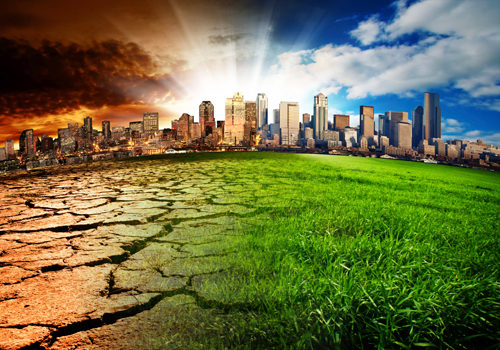New York, NY—What connects a United Nations climate summit, protesters on Wall Street and a press release from an outfit called the Consultative Group on International Agricultural Research (CGIAR)? The concept of climate-smart agriculture (CSA).
CGIAR defines itself as “a global consortium involving 15 agricultural research centers, thousands of scientists, and hundreds of partners.” The group recently declared at the UN Climate Summit 2014, held in Manhattan, that it will put at least 60% of its budget toward helping 500 million farmers adapt to the challenges of climate change. This commitment accompanied the launch of a new group, the Global Alliance for Climate-Smart Agriculture. CGIAR is just one member of the Alliance, which includes governments, researchers, civil society organizations, businesses and farmer organizations. According to CGIAR, the philosophy of CSA is to employ “a wide array of technologies, farming practices and policies that sustainably increase crop and livestock productivity, help farmers adapt to changing climates, and reduce the carbon footprint of agriculture.”
Ambitious goals like these were on the minds of the hundreds of thousands who took part in the People’s Climate March through Manhattan, which occurred ahead of the UN Climate Summit. The day after that massive display of unity and concern, a more pointed gathering took place. Several thousand people participated in a rally called Flood Wall Street, wearing blue to symbolize rising seas and harshly criticizing the global economic system as a chief cause of climate change. The event spurred clashes with police and many dozens were arrested.
UN Secretary-General Ban Ki-moon invited world leaders to the Climate Summit to foster progress toward mitigating climate change. While these talks brought no major agreements on climate change, there was some positive activity and hopeful talk, including from President Barack Obama. “Yes, this is hard,” he said of addressing climate change. “But there should be no question that the United States of America is stepping up to the plate. We recognize our role in creating this problem. We embrace our responsibility to combat it. We will do our part. And we will help developing nations do theirs.”
Support from global leaders grew for the Green Climate Fund, established five years ago to help developing nations deal with climate change, and new pledges amounting to $2.3 billion were made toward the Fund. The United States has not yet made any monetary commitment toward the Green Climate Fund.
By many accounts, putting CSA into action is one of the primary ways that these investments will be used. According to CGIAR, a number of concepts have the potential to rapidly transform agriculture. These include climate-smart villages that use advanced technology to make agriculture more sustainable and mobile phone-based climate services that deliver climate information to help guide farmers. Another is weather-indexed insurance, to help reduce the risks of planting crops that are threatened by deteriorating weather patterns.
Published in WholeFoods Magazine, November 2014










